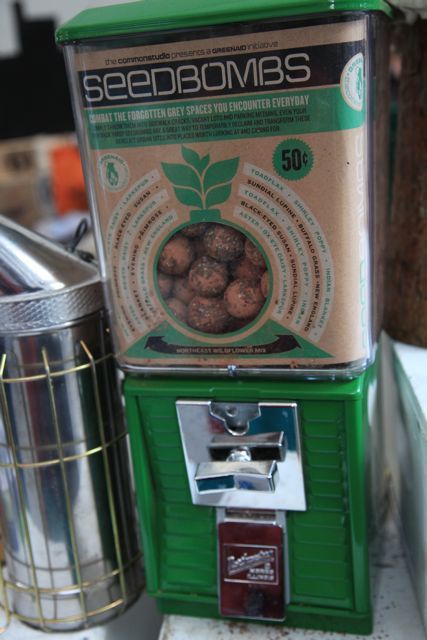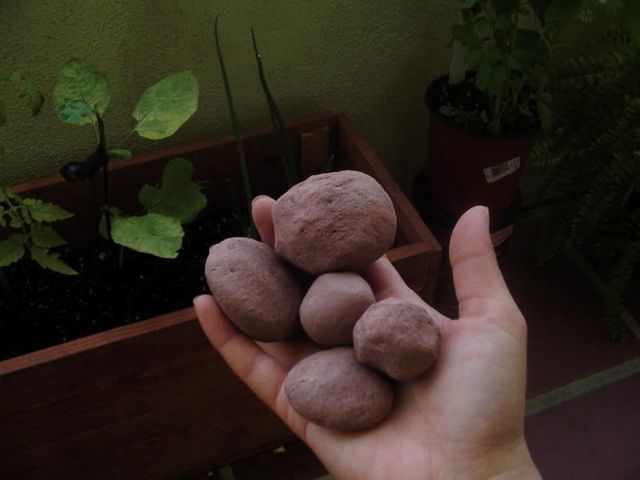10.8.10 Grass Roots

I remember Union Square before it was lush with may apple and trillium and wild geranium and bushy mountain laurel. I remember when it was full of runaways and junkies and winos—another kind of seedy entirely. This week, G came across this vending machine at the farmers market there. It sells "seedbombs," little nuggets of plant seeds, compost and clay that turn everyone into a guerilla gardener. They're meant to be simply dropped into soil anywhere. Created by design duo Daniel Philips and Kim Karlsrud of Los Angeles-based Common Studio, the seedbomb vending machines help people transform empty outdoor spaces into lush, green communities. Their Northeast Wildflower Mix contains almost two dozen varieties, including Aster,
Purple Coneflower, Sweet Alyssum and Black-Eyed Susan. The vending machines are available to rent or buy, and Common Studio will even develop a seed mix and a strategic neighborhood intervention plan in response to the unique ecologies of your area. Machines can then be installed at local bars, businesses, schools, parks, or anywhere you think they can have the biggest impact.

The term “seed grenade" was first used in 1973 by Liz Christy, founder of New York’s Green Guerrillas. The first ones were made from condoms filled with local wildflower seeds, water and fertilizer. They were tossed over fences into the city’s vacant lots in an attempt to beautify neglected neighborhoods. This was the start of the guerilla gardening movement. Eventually, many of the lots were turned into community gardens still flourishing today. The origin of the seed bomb is actually an ancient Japanese technique called “tsuchi dango” or “earth dumpling.” Masanobu Fukuoka, a Japanese microbiologist and soil scientist, introduced the custom in 1938. He is a pioneer of sustainable agriculture and an advocate of biodiversity who introduced the "one straw revolution,” a farming technique that does not require weeding, pesticides, fertilizers or tilling.SEED BOMBS2 parts indigenous seeds3 parts compost5 parts powdered red or brown clayCombine seeds and compost, then stir in clay. Moisten with water until mixture is sticky enough to mold into balls. Pinch off about a tablespoon of the mixture and roll it between the palms of your hands until it forms a tight ball.
Set the balls on newspaper, and allow to dry for 24-48 hours. Store in a cool, dry place until ready to sow.






2 Comments